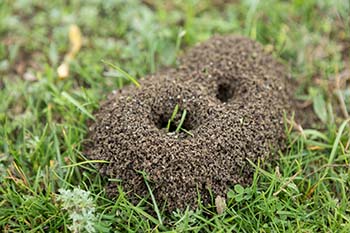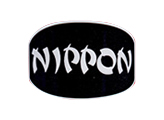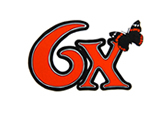Protecting lawns against an ant invasion
The hard work of caring and nurturing a lawn during winter and spring comes to fruition during the warm, summer months, but it can also be quickly undone if ants have taken root beneath the turf.
Whilst ants are important part of a garden’s ecosystem - natural predators and soil aerators - they can quickly become troublesome, especially as the weather becomes hotter and more humid.
Summer is a time when we should be enjoying the feel of grass underneath our feet, but as the ants prepare for flying ants to leave the nest, those lush, green lawns suddenly become peppered with small freshly churned soil mounds or commonly known as ant hills.
Flying ant day, or days, typically can be seen in July and August when the country is at its hottest, and whilst ants in the lawn are not a problem for many, it can see months of hard work disappear in a matter of a few days.
Preparation is key. Keeping on top of a potential ant infestation to keep those lawns looking immaculate will need a keen eye, but there are options for treating ants in lawned areas.
Types of ant
There are approximately 50-species of ants in the UK, but there are three main types found in most gardens – the common black ant, red ants and the yellow meadow ant.
The common black ant is the one most of us will see around the garden, with colonies varying in size. Colonies can grow to typically around 7,000 workers, but tend to be much smaller. Black ants tend to forage around rubbish bags, compost bins and can be found in kitchens, but are also common in outdoor areas too.
Red ants and yellow meadow ants are not quite as common as the black ant and prefer to live in lawns, meadows or the garden. These ants tend to prefer lawned areas as the grass helps to protect against predators. Red ants in particular can inflict a painful bite.
 How to spot ant activity
How to spot ant activity
Ants prefer dry, well drained grassed areas and if your lawn is mowed regularly, you should be able to spot ant activity relatively quickly.
Whilst they do very little damage to the grass itself, the mounds of soil will ruin the look of the lawn and provide the ideal growing environment for weeds.
As the colony grows, you will not only notice the amount of fresh soil appearing grow, but also a yellowing of the grass as the nest may compromise the root structure of the turf.
Treating an ant infestation
Unlike treating an infestation in the home where there is a visible line of ants returning to the nest, treating an ant infestation in the lawn is more difficult.
It needs careful consideration whether to treat ants or leave them to their own devices, but if you do choose to treat ants there are several natural options available including the introduction of nematodes.
Alternatively, a strong ant killer, such as Nippon Ant Killer Powder, is quick and effective.
Nippon Ant Killer Powder needs to be applied on a dry day. First, observe where the ants are returning to as not every ant hill will be where a nest is situated. Once located, brush the dry soil of the mound away.
Next take a shovel or spade and dig around the nest and lift the turf. Shake the bottle to loosen the powder, then direct downwards and puff two grams of powder over the nest and return the turf to the ground, encasing the powder underground. Two grams of powder can be measured as a two-second puff.
If there are multiple infestations, apply a thin line of power at the entrance of each nest or mound, up to a maximum of five. The ant powder should not be applied in areas prone to flooding or near water.
Nippon Ant Killer Powder is fast-acting and kills on contact. Once treated, the nest can be left where it is, or removed after a few days.
As with all biocides, read the label carefully before application and take into consideration the surrounding, natural environment.
Your login details have been used by another user or machine. Login details can only be used once at any one time so you have therefore automatically been logged out. Please contact your sites administrator if you believe this other user or machine has unauthorised access.












